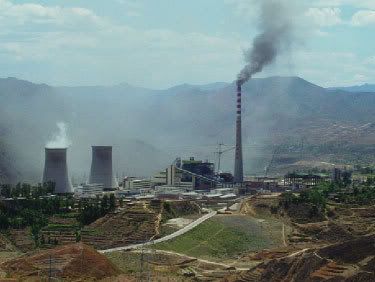Developed countries finance emission reduction projects abroad for economic gain - study
 A new study confirms an observation made often by analysts: developed countries have reasons other than philanthropy to help their neighbors reduce greenhouse gas emissions. Developed countries’ motivation to invest in greenhouse gas emission-reduction projects in developing countries is based on their desire to reduce air pollution they receive from abroad and keep transaction costs down, rather than to achieve global-scale pollution reductions. Nives Dolsak and Maureen Dunn, from the University of Washington-Bothell publish their analysis the journal Policy Sciences.
A new study confirms an observation made often by analysts: developed countries have reasons other than philanthropy to help their neighbors reduce greenhouse gas emissions. Developed countries’ motivation to invest in greenhouse gas emission-reduction projects in developing countries is based on their desire to reduce air pollution they receive from abroad and keep transaction costs down, rather than to achieve global-scale pollution reductions. Nives Dolsak and Maureen Dunn, from the University of Washington-Bothell publish their analysis the journal Policy Sciences.Dolsak and Dunn examine the projects launched under the so-called Joint Implementation (JI) mechanism that was created under the 1992 United Nations Framework Convention on Climate Change (prior to the Kyoto Protocol), which sought to first stabilize, then reduce global greenhouse gas emissions. The JI system is one of the three 'Flexible Mechanisms' under the Kyoto Protocol; the other two are Emissions Trading and the Clean Development Mechanism. Unlike the Clean Development Mechanism, JI takes place between countries which have an emission reduction requirement.
Sponsoring countries invest in greenhouse gas emission-reduction projects in other countries, by replacing a coal-fired power plant with a more efficient combined heat and power plant for example. However, the investing countries do not earn emission reduction credits from this financing. So why do they do it, and how do they choose which country to invest in?
Dolsak and Dunn’s statistical analysis, based on econometric techniques, shows that investment decisions are not motivated by philanthropy, but rather by economics. It makes sense for developed (or home) countries to test mechanisms through which developing (or host) countries can gain scarce capital and energy efficient technologies, while home countries meet reduction targets at a lower cost. In effect, home countries use host countries as “policy laboratories” in the event that such investments might lead to emission credits under future regimes. To keep the costs down, home countries are likely to locate JI projects in host countries with which they have had prior trade exchanges:
 biomass :: bioenergy :: biofuels :: energy :: sustainability :: Kyoto Protocol :: Joint Implementation :: Clean Development Mechanism :: greenhouse gas emissions :: CO2 :: economics :: game theory ::
biomass :: bioenergy :: biofuels :: energy :: sustainability :: Kyoto Protocol :: Joint Implementation :: Clean Development Mechanism :: greenhouse gas emissions :: CO2 :: economics :: game theory ::For energy projects, such as Japan’s investment to improve energy efficiency in China’s metal industry, location decisions are driven by home countries’ desire to reduce air pollution from coal-fired power plants that they receive from neighboring countries. The same applies to JI projects in Eastern European transition countries, which still mine and burn coal. In these instances, geographical proximity of a host country to a home country is the main driver of investment decisions.
For carbon sequestration projects, such as America’s investment in the conversion of marginal agricultural lands to commercial tree plantations in Costa Rica, location decision is based on the host country’s potential for avoiding deforestation as well as by previous aid and trade patterns.
The authors advise policy makers to pay particular attention to regional pollution dynamics. They conclude that investing countries are not acting simply for the good of the planet, but rather wish to see a return on their investment. Dolsak and Dunn suggest that “those seeking to enhance multilateral cooperation via international regimes should pay close heed to the costs and benefits that regime creates for the key players.”
More information:
-Springer: It’s enough to turn your neighbors green - Dec. 14, 2006
-Joint Implementation at the UNFCCC
-Clean Development Mechanism at the UNFCCC
 -------------------
-------------------
 Spanish company Ferry Group is to invest €42/US$55.2 million in a project for the production of biomass fuel pellets in Bulgaria.
The 3-year project consists of establishing plantations of paulownia trees near the city of Tran. Paulownia is a fast-growing tree used for the commercial production of fuel pellets.
Spanish company Ferry Group is to invest €42/US$55.2 million in a project for the production of biomass fuel pellets in Bulgaria.
The 3-year project consists of establishing plantations of paulownia trees near the city of Tran. Paulownia is a fast-growing tree used for the commercial production of fuel pellets.









0 Comments:
Post a Comment
Links to this post:
Create a Link
<< Home